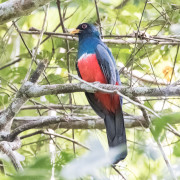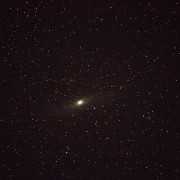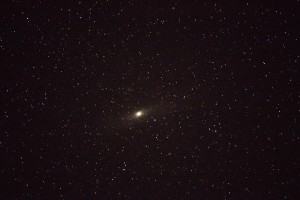M31, an old friend of mine
/0 Comments/in Nature /by stefano.gianazziThis is the M31 galaxy in the Andromeda Constellation. The picture is “technically poor”, but in 1990, with a Canon AE1 camera piggy-back mounted on a Meade 2080 telescope, a 135 mm lens and a Scotch Chrome 800-3200 film, it took me a 15 minutes exposure and a ski suit to obtain a picture like this. Thus, the film got stuck into the camera the morning after and when i opened it sunlight burnt all the pictures exposed.
Yesterday evening, from a garden in the Beigua GeoPark, with my D810 and a 300mm f4 lens, it took me 3 seconds @10.000 ISO to shoot this one while i was playing with my father’s dog (astrophotographers will be indulgent).
M31 (Andromeda Galaxy)
f4 / 3,0 seconds exposure / ISO 10.000
Right ascension 00h 42m 44.3s Declination +41° 16′ 9″ Redshift z = -0.001001 Helio radial velocity −301 ± 1 km/s Distance 2.54 ± 0.11 Mly (778 ± 33 kpc) Type SA(s)b Mass ~1×1012[2][7] M☉size (ly) ~100kly diameter Number of stars 1 trillion (1012) Apparent dimensions (V) 190′ × 60′ Apparent magnitude (V) 3.44 Absolute magnitude (V) −21.5
Dung Beetle: A true Savannah King
/0 Comments/in Nature /by stefano.gianazziA nature tiny wonder, a perfect machine with sun (and stars too) bearing capabilities.
Dung beetles are beetles that feed partly or exclusively on feces. All the species belong to the superfamily Scarabaeoidea; most of them to the subfamilies Scarabaeinae and Aphodiinae of the family Scarabaeidae (scarab beetles). As most species of Scarabaeinae feed exclusively on feces, that subfamily is often dubbed true dung beetles. There are dung-feeding beetles which belong to other families, such as the Geotrupidae (the earth-boring dung beetle). The Scarabaeinae alone comprises more than 5,000 species.
Many dung beetles, known as rollers, roll dung into round balls, which are used as a food source or brooding chambers. Other dung beetles, known as tunnelers, bury the dung wherever they find it. A third group, the dwellers, neither roll nor burrow: they simply live in manure. They are often attracted by the dung burrowing owls collect.
Dung beetles are currently the only insect known to navigate and orient themselves using the Milky Way. (Source:Wikipedia)
Rainy spring week-end tests
/0 Comments/in Nature /by stefano.gianazziSure, it won’t never be Ernst Schäfer’s 1939 Tibet Expedition but it’s been a good way to break the annoying rainy week-end routines of these days. Geared with a plastic box and a small fishing net, portable light and rain jacket, after an early afternoon “patrol” at twilight i moved under the annoying rain trough the small and narrow lanes typical of the hills surrounding Genoa. Let’s omit the fact that here small flowerbeds are fenced Fort-Knox-Style and the several unsuccessful attempts.
Guided by the unique verse of the Mediterranean Tree Frog i decided to take the challenge and subtly enter into a private garden, open a huge water container and catch the frog with the net. Very brave! I  made two session with the frog trying to harass it as little as possible.
All images has been taken with the Canon EF 100mm f/2.8 Macro USM, off camera Canon Speedlite 480 EXII flash with Lastolite Softbox and Yongnuo YN-622C Wireless E TTL Flash Trigger.Tool-of-the-trade: a Cuki Aluminum foil to bounce the flash.
Interesting links
Here are some interesting links for you! Enjoy your stay :)Categories
Archive
- April 2017
- February 2017
- October 2016
- September 2016
- August 2016
- July 2016
- April 2016
- March 2016
- August 2015
- May 2015
- January 2015
- November 2014
- October 2014
- August 2014
- June 2014
- May 2014
- April 2014
- March 2014
- January 2014
- November 2013
- October 2013
- July 2013
- May 2013
- March 2013
- February 2013
- December 2012
- November 2012
- July 2012
- November 2011
- December 2010
- November 2010
- October 2010
- August 2010















